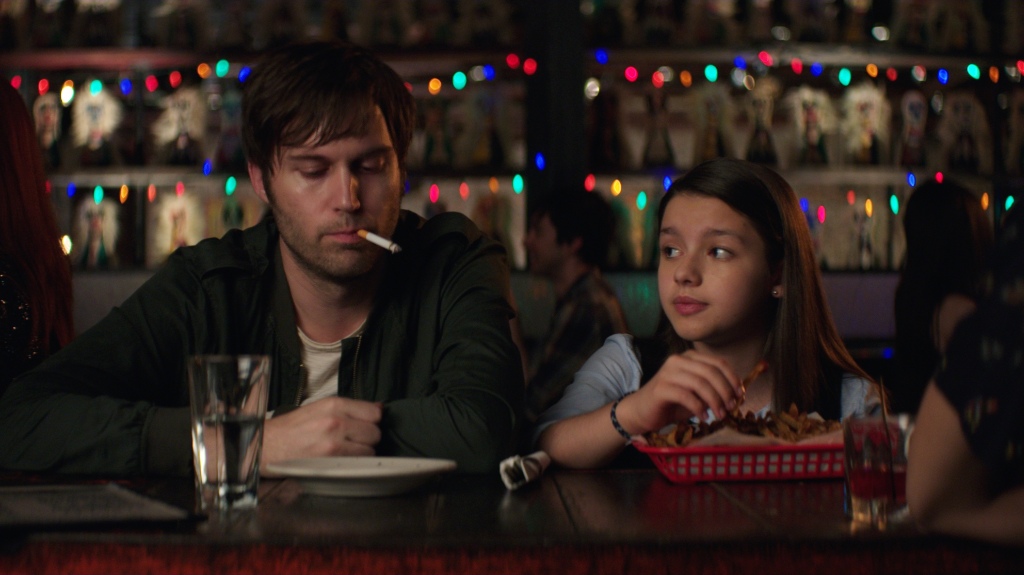Curfew (Shawn Christensen, 2012) is an Oscar-winning 19-minute short film about a suicidal man, Richie, who is asked by his estranged sister to look after his niece, Sophia, for the evening. Over the course of the film, the bond between the two characters grows and develops in many interesting ways. We learn that the reason that Richie has not seen Sophia since she was a baby is due to the fact that he dropped her on her head whilst taking care of her, leading to an important moment of development between the pair. After the day is over, Richie drops Sophia off at his sister’s house and returns home to commit suicide. However, the film ends with Richie being interrupted by another phone call from his sister on much nicer terms, requesting him once again to look after Sophia.
The film priorities narrative and character above all us, with Christensen utilising a simple three-act structure as well as a linear narrative throughout the film. The film could be classified under the ‘drama’ genre, meaning it doesn’t not have to conform to any particular conventions. The narrative could be argued as cyclical due to the film being bookended with scenes of Richie committing suicide in the bath. Despite this, Christensen also manages to successfully create an aesthetically pleasing experience, utilising the key elements of film form throughout.
For example, the film aptly incorporates colour in symbolically meaningful ways. Red is used as a symbol of Richie’s suicide, and can be seen within the bloodstained bath as well as the phone from which he receives the call from his sister. Conversely, blue is prominently displayed in the bowling alley scene with Sophia which suggests that both characters feel safe and have trust in one another. A shallow depth of field and artificial lighting both accentuate the dreamlike sense of wonder the pair experiences in each other’s presence. The film also features a particularly standout dance sequence that is in fact merely a hallucination of Richie’s mind. Throughout this, Christensen employs the use of a spinning camera, displaying Richie’s hallucinatory state of mind as well as a crab shot to follow Sophia dancing down the bowling alley. Christensen’s use of unorthodox techniques sets the scene apart from the rest of the film, alongside the use of a particularly dreamy composed score written by himself.
Christensen’s use of mise-en-scène throughout the film is also worthy of acclaim. Concerning costume design, Richie’s extremely rugged and dishevelled appearance starkly juxtaposes that of Sophia, who is warmly wrapped up in a large coat and wears a woolly hat. The contrast between the pair’s appearances reinforces the different backgrounds that the two originate from, and is an example of visual storytelling featured throughout the film. Richie is also unshaven and is often seen with a cigarette, further displaying his rough way of life.
One of the final shots of the film perfectly encapsulates Richie’s conflicted state of mind. He is filmed from an upside-down mid-closeup, displaying his defeated and hopeless expression. The red phone handset is also displayed in the frame, informing the viewer that an escape from the trauma is available to him, but at this moment, Richie is choosing to ignore it.
Personally, I thoroughly enjoyed Curfew from start to finish. Christensen incorporated the perfect blend of narrative, character development and aesthetic choices over the course of the film’s 19-minute duration. The performances by the duo are convincingly genuine and the film is also paced brilliantly. The film demonstrated to me the importance of colour palettes used in order to symbolise meaning.
